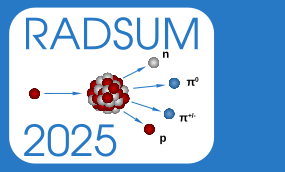Conveners
Modelling of radiation effects in superconductors
- Daniele Torsello
Modelling of radiation effects in superconductors
- Daniele Torsello
The first part of the talk will summarize the physics behind the changes of the superconducting properties upon radiation. The introduced defects enhance flux pinning and scattering of the charge carriers. The implications of these two effects on metallic and high-temperature superconductors will be compared. While the change in pinning is currently difficult to predict, the influence of the...
It is crucial to immobilize magnetic vortices threading the superconductors. Capturing vortex pinning from microscopic interactions with defects poses a very difficult yet insightful task. The theory of strong vortex pinning provides the necessary starting point. We revisit the different regimes of strong-pinning theory and investigate them using large-scale numerical solutions of the...
The superconducting properties of rare-earth barium cuprates (REBCOs) are extremely sensitive to the presence of crystal defects. Irradiation of REBCOs with energetic particles produces a plethora of defects, difficult to characterize thoroughly with experimental investigations alone, in particular at the expected working conditions. Atomistic simulations can assist in the understanding of the...
Understanding irradiation damage in high-temperature superconductors is important as new compact fusion reactors rely on these materials to generate the high magnetic fields needed to confine the plasma. The superconductor of choice is (RE)Ba2Cu3O7-δ (RE = rare earth element), REBCO. We have used high-energy-resolution X-ray absorption spectroscopy (XAS) to probe the local environment around...
High temperature superconducting (HTS) materials, such as YBa2Cu3O7-δ, will be exposed to high energy neutrons that may impact the superconducting properties and ultimately lead to degradation of the magnetic field strength. Density functional theory (DFT) calculations have been used to investigate the energetics of point defects in YBa2Cu3O7. The formation energies of point defects indicate...
High-temperature superconductors (HTS) are promising materials for next-generation fusion reactors and particle accelerators, owing to their remarkable field strengths at elevated temperatures. In these environments, radiation will impinge on the HTS, causing damage. Assessing the extent and nature of this damage is essential for determining the material's lifespan and any necessary shielding...
Atomic collision processes are fundamental to numerous advanced materials technologies, such as electron microscopy, semiconductor processing and nuclear power generation. Understanding the atomistic scale phenomena happening during the primary damage production has been a research topic for many decades, both computationally and experimentally. The standard measurement of quantifying the...
FLUKA is a general-purpose code for the Monte Carlo simulation of coupled hadronic and electromagnetic radiation showers in complex aterial geometries, accounting for the transport, interaction, and decay (where applicable) of over 60 particle species (photons, leptons, hadrons, and ions) at energies up to the PeV and down to the keV (down to 0.01 eV for neutrons). A wide range of...
To predict the operating lifetime of materials in radiation environments, the displacement per atom(dpa) value, which is the average number of displaced atoms per atom of a material based on the Norgett-Robinson-Torrens (NRT) model, is widely used as an exposure unit and is defined by elastic energy transfer to Primary Knock on Atoms (PKAs), as well as high-energy effects (e.g., nuclear...
